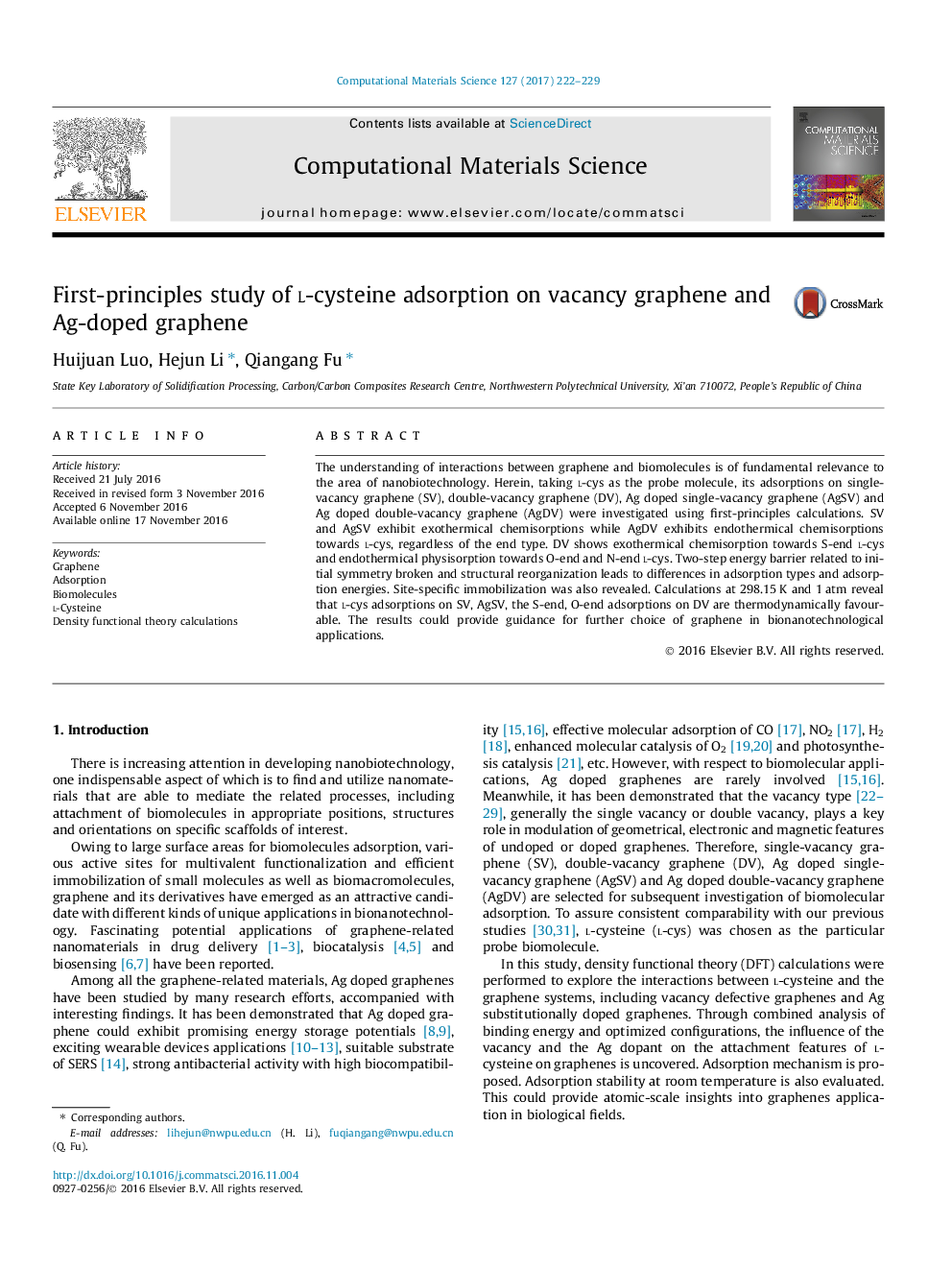| Article ID | Journal | Published Year | Pages | File Type |
|---|---|---|---|---|
| 5453512 | Computational Materials Science | 2017 | 8 Pages |
â¢Influences of the vacancy type and the Ag dopant on l-cysteine adsorption are investigated.â¢The dangling C atom is warped for stable chemisorption in vacancy graphenes.â¢Two-step energy barrier leads to different adsorption types and adsorption energies.â¢Room temperature application potential is explored.
The understanding of interactions between graphene and biomolecules is of fundamental relevance to the area of nanobiotechnology. Herein, taking l-cys as the probe molecule, its adsorptions on single-vacancy graphene (SV), double-vacancy graphene (DV), Ag doped single-vacancy graphene (AgSV) and Ag doped double-vacancy graphene (AgDV) were investigated using first-principles calculations. SV and AgSV exhibit exothermical chemisorptions while AgDV exhibits endothermical chemisorptions towards l-cys, regardless of the end type. DV shows exothermical chemisorption towards S-end l-cys and endothermical physisorption towards O-end and N-end l-cys. Two-step energy barrier related to initial symmetry broken and structural reorganization leads to differences in adsorption types and adsorption energies. Site-specific immobilization was also revealed. Calculations at 298.15Â K and 1Â atm reveal that l-cys adsorptions on SV, AgSV, the S-end, O-end adsorptions on DV are thermodynamically favourable. The results could provide guidance for further choice of graphene in bionanotechnological applications.
Graphical abstractDownload full-size image
